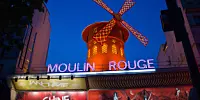Ad
-
PHOTOS: Northern Lights stun in skies across southern France
Phenomena was seen across almost all of France this weekend
-
Blades of Paris Moulin Rouge cabaret club mysteriously fall off
It was not a windy night and the blades are checked regularly, say managers
-
New summer flights and flat-rate rail pass: 7 French travel updates
We also look at baggage fee changes, a ferry and train offer - and the installation of motorway barriers to keep out boars
























